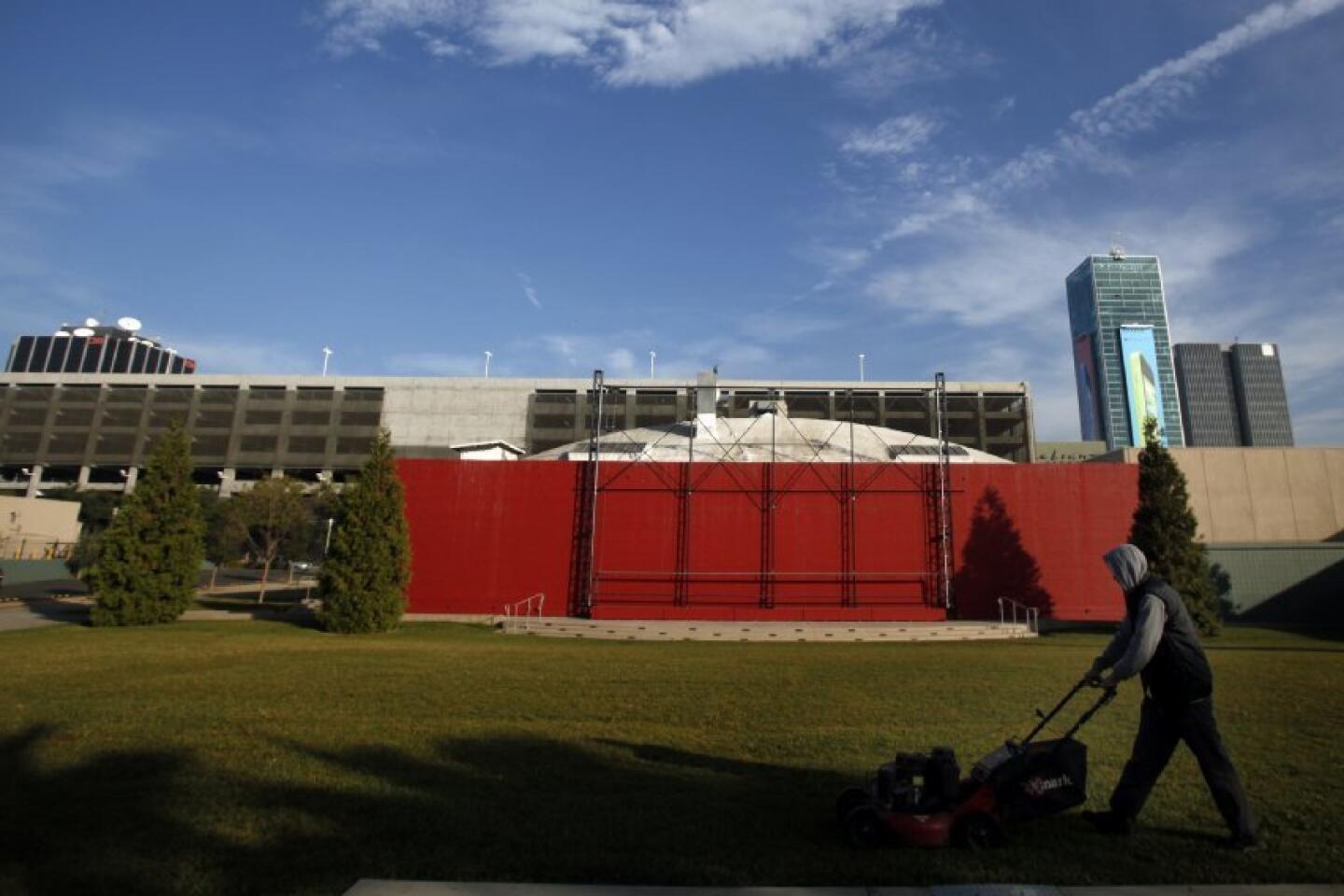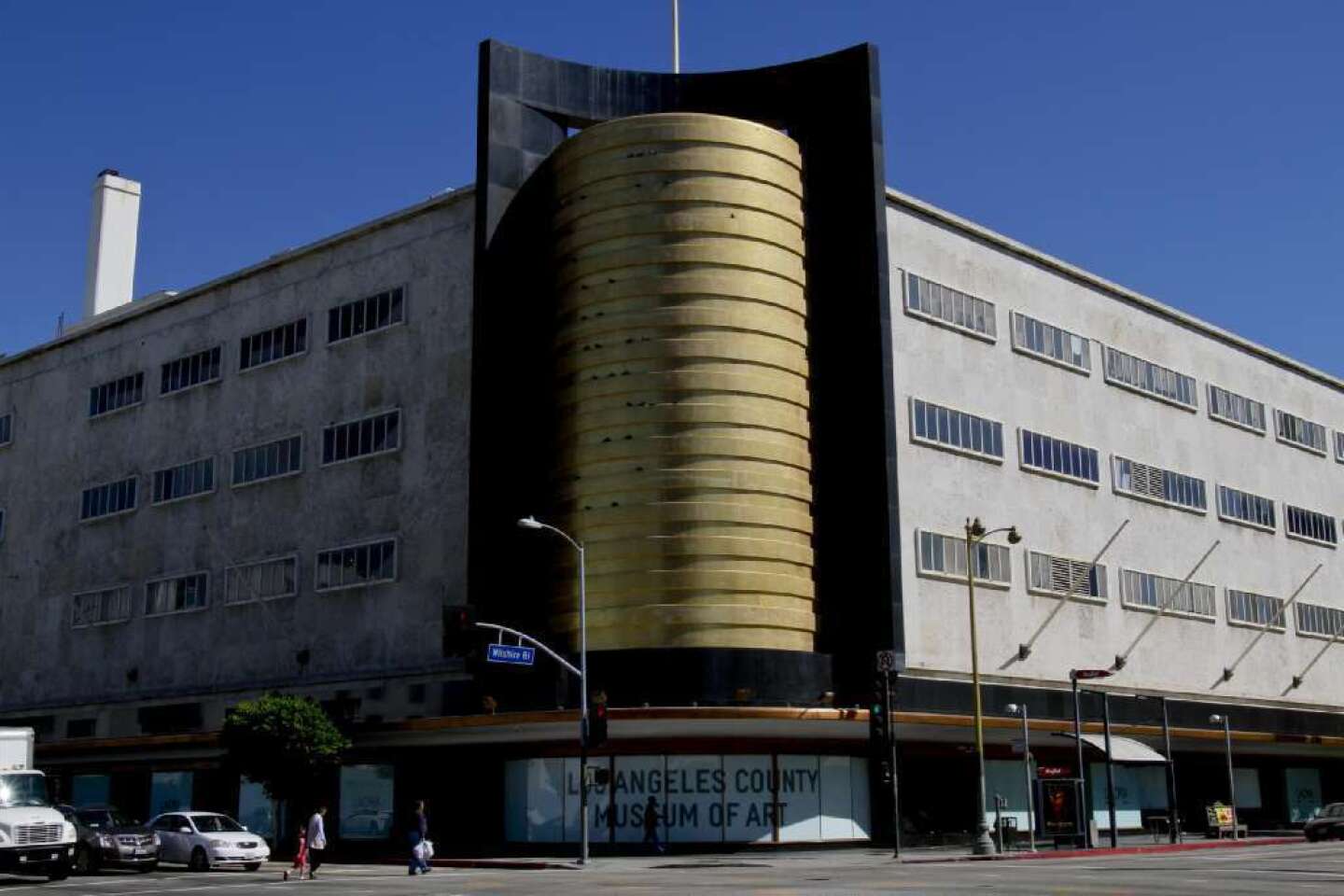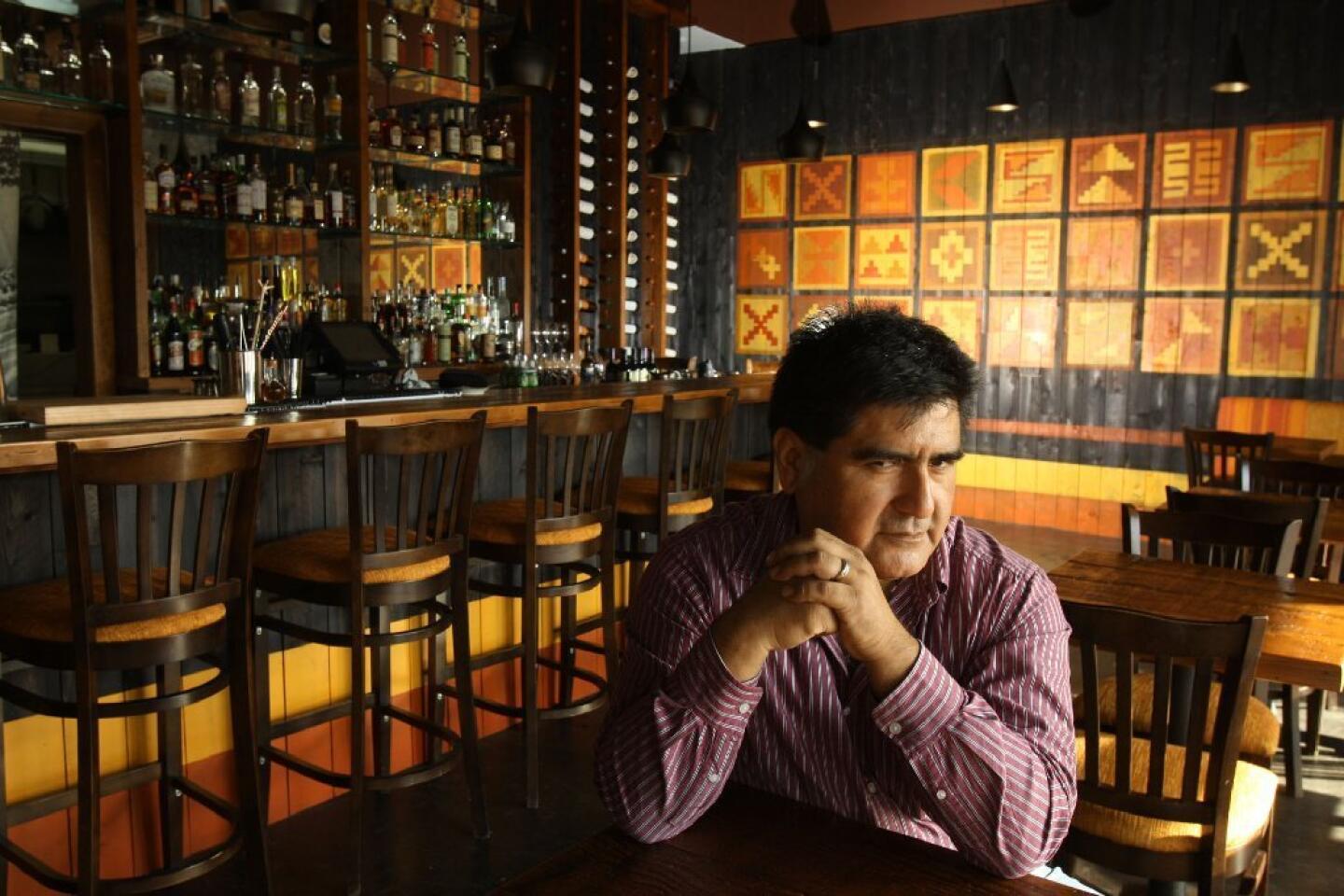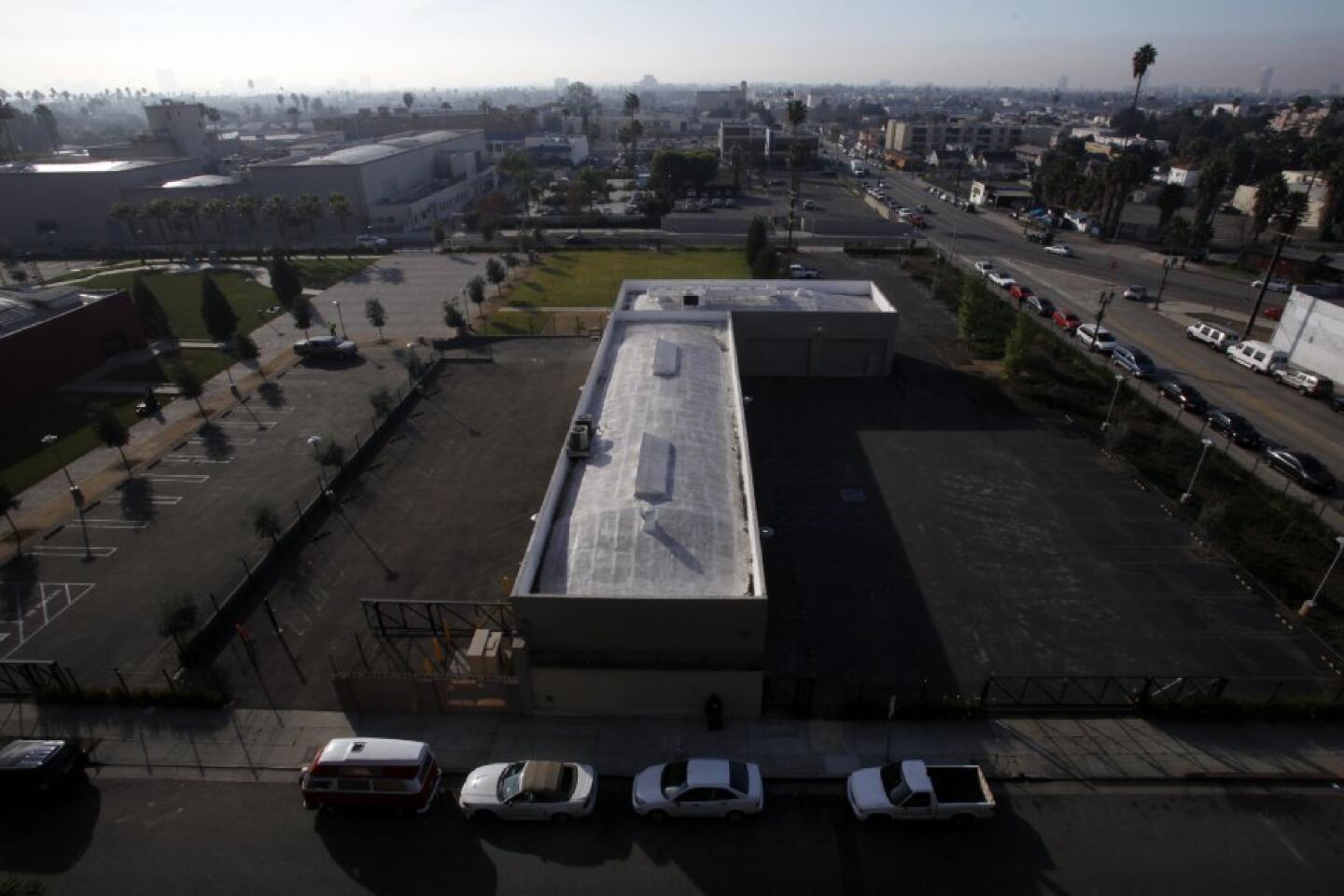Some feel cheated by change in film academy’s Hollywood museum plans
The visitors came with a box of doughnuts and an offer to buy the Hollywood property that Funk Bros. Automotive had called home for more than a decade.
In its place, they said, the Academy of Motion Picture Arts and Sciences wanted to build a movie museum.
Hovig Manouchekian, manager of his family’s car repair shop, remembers the 2006 meeting with the academy’s real estate agent and a representative of the Community Redevelopment Agency of Los Angeles as tense — with the two men pressuring him to make a deal, or force the CRA to seize the land with its powers of eminent domain.
Manouchekian, 37, said he felt “bullied” that day, and during subsequent negotiations that resulted in the sale of the Funk Bros. property a year later.
Manouchekian believed that the academy would soon break ground on a sleek $400-million, 200,000-square-foot museum that would transform a stagnant section of Hollywood south of Sunset Boulevard into a tourist mecca.
But in 2011, the academy announced that it wouldn’t build a museum on the site it had spent about $50 million to assemble. Instead, the Beverly Hills-based organization that stages the annual Oscars show said it would build a $300-million museum on the former May Co. site owned by the Los Angeles County Museum of Art at Fairfax Avenue and Wilshire Boulevard.
At the time, the academy’s then-president, Tom Sherak, said the organization had no plans to sell the Hollywood property and would instead use it to stage public events devoted to the cinema arts.
Then in January, Kilroy Realty Corp. disclosed that it had bought the site from the academy for $46 million. It plans to put up offices, retail space and housing on the property.
PHOTOS: Oscars 2014 top nominees | Nominee reactions | Snubs and surprises
Manouchekian, whose family has relocated Funk Bros. to a leased garage nearby, feels misled.
“You throw out such a threatening term to scare businesses, and now there is no benefit to the community,” he said.
The two men Manouchekian met with in 2006, John Perfitt of the CRA and Scott Katcher, the real estate agent representing the academy, insisted that they never threatened to seize the property through eminent domain during their discussions with the family.
“The academy as an organization, that’s not their style,” said Katcher, who works for Studley Inc.
But Los Angeles City Council member Mitch O’Farrell, whose district includes the former academy site, said he can understand why some business owners are upset.
“I don’t blame them,” O’Farrell said. “If you think about it, regardless of the eminent domain question, it’s a bit of a bait and switch.”
::
Less than a mile from the gleaming theater that will host Sunday’s Oscar ceremony lies the parcel that Pritzker Prize-winning architect Christian de Portzamparc was to have turned into the academy’s film museum.
The academy began assembling the land in the mid-2000s with the help of the CRA, the now-defunct state-chartered agency that was overseen by the City Council and formed to spur private investment in economically depressed areas.
The two organizations struck an agreement that called for them to work together on property acquisitions, the design of the prospective museum and the commissioning of various studies necessary for the project’s approval by the city.
Perfitt, who served as the CRA’s project manager on the museum development, said the academy paid prices “close to the top of the real estate market” in acquiring the 3.5-acre site, nearly a full square block at Vine Street and De Longpre Avenue.
In addition to the Funk Bros. parcel, the academy purchased properties that housed the Golden Bridge Yoga studio, the Post Group postproduction firm and a Big Lots store. By 2008, the academy had amassed a sizable parcel that, when joined with its adjacent Pickford Center for Motion Picture Study, created a roughly 8-acre hub.
MORE: Complete list of nominees | Play-at-home ballot | Actors who’ve never won Oscars
Neighbors planned for a boom in tourism. Jorge Rodriguez, whose Peruvian eatery Los Balcones is across the street from the site, decided to expand, anticipating big business once the museum opened.
But things quickly changed. Sid Ganis, president of the academy from 2005 to 2009, remembers the day in late 2008 when it first became apparent that the project might have been imperiled. The stock market had just collapsed.
“We all looked at each other, including Mr. De Portzamparc, and said, ‘Our lofty plans might have to wait,’” Ganis said.
In October 2011, the academy announced plans to build its museum on the LACMA campus, partly because the recession had stifled fundraising efforts for the Hollywood development. Then-President Sherak told The Times that building the museum on the former May Co. site could be done for half the cost.
But Sherak, who died in January, also said at the time that the academy had no intention of selling the Vine Street property and would instead rehabilitate it. By then, the fenced-in property had become an eyesore: Windows were boarded up at the Post Group facility and weeds were growing in the Big Lots parking lot.
PHOTOS: Oscars 2014 presenters and performers, by The Times
“We have committed a lot of money there to raze buildings and turn the area into something that people can use,” Sherak said.
Indeed, the academy tore down several structures to create a 10,000-square-foot plaza that included a 40-foot-by-20-foot outdoor movie screen. It debuted an Oscars Outdoors screening series with a May 2012 showing of “Field of Dreams.” The screenings continued into 2013, when more than 20 movies were shown over the summer.
Kerry Morrison, executive director of the Hollywood Property Owners Alliance, was impressed.
“It became quite a gem and was transformed into a really special place,” she said. “I loved it — it was a real community asset.”
::
Less than a year after the second season of Oscars Outdoors ended, news of the academy’s sale to Kilroy Realty came as a shock to some neighboring businesses.
“The entertainment culture of L.A. started in this area, so it would have been great if the academy kept something there,” said George Abou-Daoud, who owns the nearby eateries the Bowery and the Mercantile.
But Kilroy’s plans to build a 475,000-square-foot development will still accomplish the goal of revitalizing the area, according to O’Farrell and others.
“Is it the museum? No, it is not the museum,” said Leron Gubler, president of the Hollywood Chamber of Commerce. “But it will be a good project for Hollywood.”
But Los Balcones’ Rodriguez and Funk Bros.’ Manouchekian are critical of how things were handled.
Rodriguez said that after the academy canceled its Hollywood museum plans, he was left wondering what to do with the additional space for which he’d signed a long-term lease.
“The city did its best to accommodate the needs of the academy,” he said. “All that effort … just went to waste.”
Manouchekian said that his family opted to sell its roughly 5,000-square-foot property in part because it couldn’t afford to hire a lawyer to fight off the academy. Also, Manouchekian’s father was tending to his wife, who was in poor health.
“So we said, ‘Let’s try to work this out.’ That’s where we went wrong,” Manouchekian said.
Heather Cochran, the academy’s managing director of planning and operations, said the academy did not ask the CRA to use eminent domain, which is considered a measure of last resort. She said she was not aware of any discussions in which property owners were threatened with having their land seized.
“Can someone say they felt bullied because of eminent domain?” Cochran asked. “All I know are the conversations that we had. There was no carrot-and-stick approach.”
Ganis, however, acknowledged that the possibility of using eminent domain had come up in internal academy discussions.
“I can remember people saying, ‘Man, I hope we don’t have to do that,’” he said. “And would we have done it? I would say to you, no, I don’t think we would have done it.”
Manouchekian said his family is bound by a confidentiality agreement and can’t discuss the financial terms of the sale. Representatives of other companies that sold property to the academy, including Big Lots and Golden Bridge, did not respond to requests for comment.
Los Angeles Mayor Eric Garcetti, who represented Hollywood on the City Council when the academy was planning the museum, declined to comment.
Katcher denied that he or the CRA took anything but “a friendly tack” when working with landowners.
“Did everybody say, ‘Hey, this is a great idea, I want to sell’? No, but everyone got paid fair market and then some,” he said.
VIDEO: Key scenes from Oscar acting nominees
::
Cochran said the academy is in talks with Kilroy about continuing to use the Vine Street property for screenings until the developer’s project is approved. She also noted that the Pickford Center offers public programming, including screenings at its 286-seat theater, although the facility, which largely houses offices and a film archive, is not widely visited by the public.
On a recent afternoon, German tourist Clemens Hoffman and Marian Bernard of Irvine were scanning Vine Street for Michael Jackson’s Walk of Fame star. (They were about a mile from the late singer’s Hollywood Boulevard star, though local talk radio host Michael Jackson’s star is located on Vine.)
Bernard and Hoffman, both 22, weren’t sure what they’d do next. There are a handful of Hollywood attractions that pay homage to the film business — including Madame Tussauds wax museum and the famed Chinese Theatre — but those sites weren’t in their plans.
Hoffman wished there were an academy movie museum to visit. Bernard agreed. “Many people associate Hollywood with movies,” he said. “Why would people have the museum somewhere else? Why isn’t it in Hollywood?”
More to Read
From the Oscars to the Emmys.
Get the Envelope newsletter for exclusive awards season coverage, behind-the-scenes stories from the Envelope podcast and columnist Glenn Whipp’s must-read analysis.
You may occasionally receive promotional content from the Los Angeles Times.











